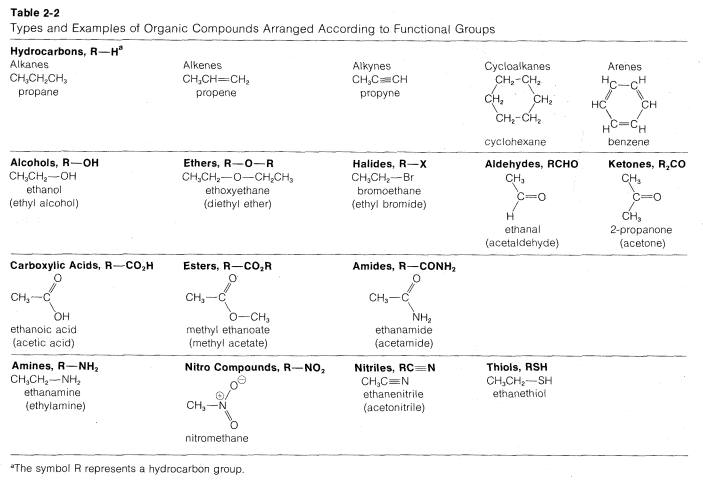

علم الكيمياء

تاريخ الكيمياء والعلماء المشاهير

التحاضير والتجارب الكيميائية

المخاطر والوقاية في الكيمياء

اخرى

مقالات متنوعة في علم الكيمياء

كيمياء عامة


الكيمياء التحليلية

مواضيع عامة في الكيمياء التحليلية

التحليل النوعي والكمي

التحليل الآلي (الطيفي)

طرق الفصل والتنقية


الكيمياء الحياتية

مواضيع عامة في الكيمياء الحياتية

الكاربوهيدرات

الاحماض الامينية والبروتينات

الانزيمات

الدهون

الاحماض النووية

الفيتامينات والمرافقات الانزيمية

الهرمونات


الكيمياء العضوية

مواضيع عامة في الكيمياء العضوية

الهايدروكاربونات

المركبات الوسطية وميكانيكيات التفاعلات العضوية

التشخيص العضوي

تجارب وتفاعلات في الكيمياء العضوية


الكيمياء الفيزيائية

مواضيع عامة في الكيمياء الفيزيائية

الكيمياء الحرارية

حركية التفاعلات الكيميائية

الكيمياء الكهربائية


الكيمياء اللاعضوية

مواضيع عامة في الكيمياء اللاعضوية

الجدول الدوري وخواص العناصر

نظريات التآصر الكيميائي

كيمياء العناصر الانتقالية ومركباتها المعقدة


مواضيع اخرى في الكيمياء

كيمياء النانو

الكيمياء السريرية

الكيمياء الطبية والدوائية

كيمياء الاغذية والنواتج الطبيعية

الكيمياء الجنائية


الكيمياء الصناعية

البترو كيمياويات

الكيمياء الخضراء

كيمياء البيئة

كيمياء البوليمرات

مواضيع عامة في الكيمياء الصناعية

الكيمياء الاشعاعية والنووية
Classification by Functional Groups
المؤلف:
John D. Roberts and Marjorie C. Caserio
المصدر:
Basic Principles of Organic Chemistry : LibreTexts project
الجزء والصفحة:
........
20-12-2021
2310
Classification by Functional Groups
There are a number of recurring types of structural features in organic compounds that commonly are known as functional groups. In fact, a traditional approach to the subject of organic chemistry involves the classification of compounds according to their functional groups. Thus the structural features C=CC, C≡CC, C=O, OH, NH2, and C≡N are the functional groups of alkenes, alkynes, carbonyl compounds, alcohols, amines, and nitriles, respectively. It will be helpful to look at the structural features of some of the major types of organic compounds even though the details of their chemistry will not be discussed until later chapters. Examples of the structures arranged in accord with their functional groups are given in Table 2-2. The examples chosen are representative of compounds containing carbon and hydrogen (hydrocarbons) as well as compounds containing halogens, oxygen, nitrogen, and sulfur. We do not expect you to memorize this table. In time you will become familiar with all of the types of structures in it.
In Table 2-2 we generally have used systematic names as first-choice names because these names emphasize the relationships between the compounds and ease the burden fo the beginning student in having to remember many special names. We have little hope that systematic names such as methanal, 2-propanone, and ethanoic acid soon will replace the commonly used nonsystematic names formaldehyde, acetone, and acetic acid. But there is no question that every organic chemist knows what compounds the names methanal, 2-propanone, and ethanoic acid represent, so the beginner can communicate with these names and later become familiar with and use the special names.

 الاكثر قراءة في مواضيع عامة في الكيمياء العضوية
الاكثر قراءة في مواضيع عامة في الكيمياء العضوية
 اخر الاخبار
اخر الاخبار
اخبار العتبة العباسية المقدسة

الآخبار الصحية















 قسم الشؤون الفكرية يصدر كتاباً يوثق تاريخ السدانة في العتبة العباسية المقدسة
قسم الشؤون الفكرية يصدر كتاباً يوثق تاريخ السدانة في العتبة العباسية المقدسة "المهمة".. إصدار قصصي يوثّق القصص الفائزة في مسابقة فتوى الدفاع المقدسة للقصة القصيرة
"المهمة".. إصدار قصصي يوثّق القصص الفائزة في مسابقة فتوى الدفاع المقدسة للقصة القصيرة (نوافذ).. إصدار أدبي يوثق القصص الفائزة في مسابقة الإمام العسكري (عليه السلام)
(نوافذ).. إصدار أدبي يوثق القصص الفائزة في مسابقة الإمام العسكري (عليه السلام)


















